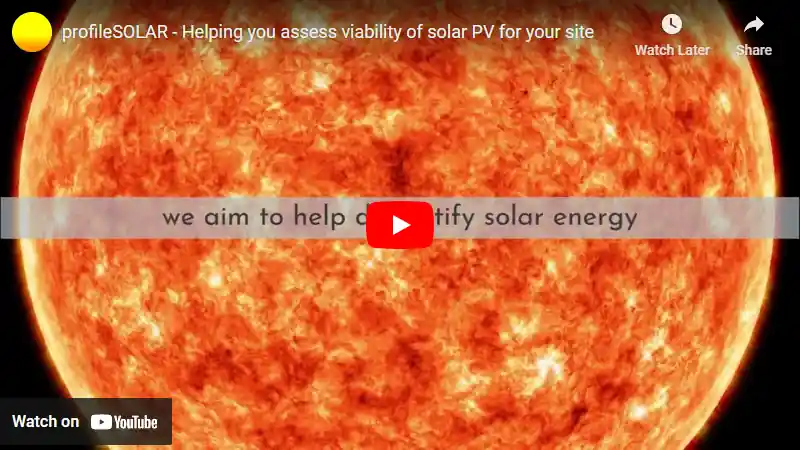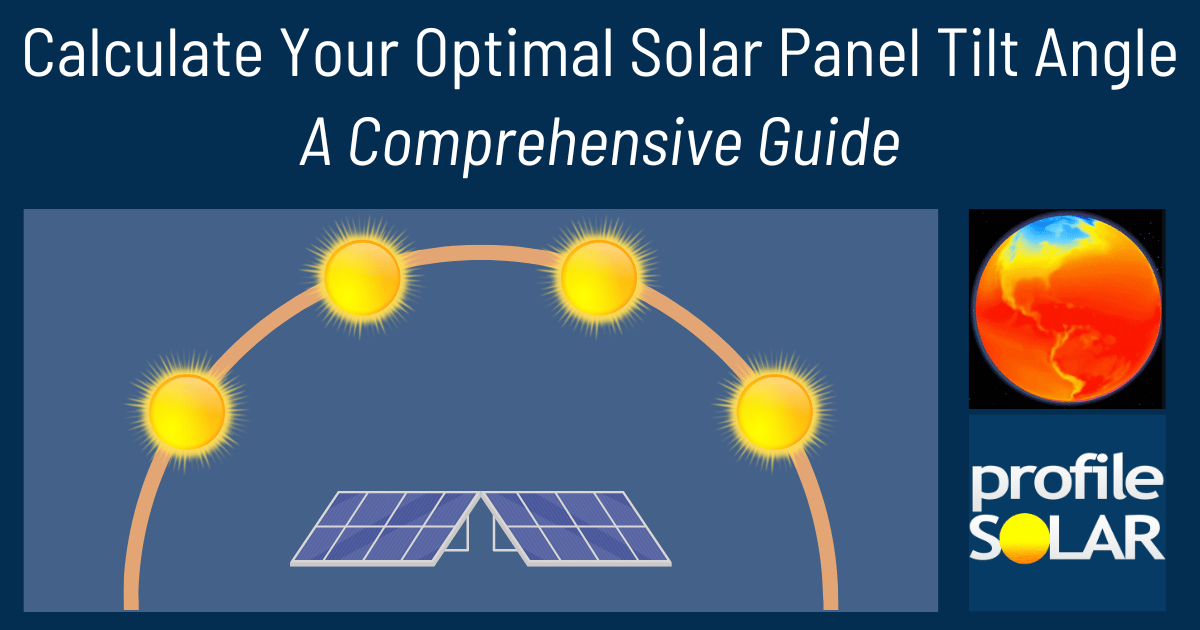

The location of Solothurn, Switzerland is fairly good for generating solar energy year-round, although it's not perfect. This is based on the amount of electricity that can be produced per kilowatt of installed solar panels throughout the four seasons.
In simple terms, during summer and spring, a lot more electricity can be generated compared to autumn and especially winter. Specifically, in summer you could expect around 5.74 units (kilowatt hours or kWh) of electricity per day for each kilowatt (kW) of solar panels installed. In spring this drops slightly to 4.89 units per day but still remains quite high.
However, in autumn the production drops significantly to about 3.02 units per day and in winter it's even lower at only around 1.45 units per day for each kW installed.
So ideally, if you were looking at when to generate solar energy at this location, summer and spring would be your best bet due to higher sunlight hours and intensity.
For fixed panel installations here, tilting the panels at an angle of 40 degrees towards south would give you maximum total production from your solar installation throughout the year as it aligns well with sun’s path across sky.
As far as environmental or local factors that might get in the way of producing solar energy here; Switzerland has a varied topography with mountains which could potentially block sunlight depending on where exactly you are located within Solothurn. Also weather-wise; while summers are generally sunny there may be considerable cloud cover during other seasons reducing sunlight availability.
To overcome these challenges when installing your solar panels; choosing a site with minimal shading from nearby structures or trees is important - especially considering sun’s lower position during winter months. Additionally using high efficiency panels can help ensure greater energy production even under less than ideal light conditions.
Also consider snowfall - if area experiences heavy snowfall then regular cleaning off snow from panels will be necessary to ensure they continue to generate electricity.
Note: The Northern Temperate Zone extends from 35° latitude North up to 66.5° latitude.
So far, we have conducted calculations to evaluate the solar photovoltaic (PV) potential in 51 locations across Switzerland. This analysis provides insights into each city/location's potential for harnessing solar energy through PV installations.
Link: Solar PV potential in Switzerland by location
Become the exclusive sponsor for Solothurn, Switzerland!
Solar output per kW of installed solar PV by season in Solothurn
Seasonal solar PV output for Latitude: 47.2039, Longitude: 7.5337 (Solothurn, Switzerland), based on our analysis of 8760 hourly intervals of solar and meteorological data (one whole year) retrieved for that set of coordinates/location from NASA POWER (The Prediction of Worldwide Energy Resources) API:




Ideally tilt fixed solar panels 40° South in Solothurn, Switzerland
To maximize your solar PV system's energy output in Solothurn, Switzerland (Lat/Long 47.2039, 7.5337) throughout the year, you should tilt your panels at an angle of 40° South for fixed panel installations.
As the Earth revolves around the Sun each year, the maximum angle of elevation of the Sun varies by +/- 23.45 degrees from its equinox elevation angle for a particular latitude. Finding the exact optimal angle to maximise solar PV production throughout the year can be challenging, but with careful consideration of historical solar energy and meteorological data for a certain location, it can be done precisely.
We use our own calculation, which incorporates NASA solar and meteorological data for the exact Lat/Long coordinates, to determine the ideal tilt angle of a solar panel that will yield maximum annual solar output. We calculate the optimal angle for each day of the year, taking into account its contribution to the yearly total PV potential at that specific location.

Seasonally adjusted solar panel tilt angles for Solothurn, Switzerland
If you can adjust the tilt angle of your solar PV panels, please refer to the seasonal tilt angles below for optimal solar energy production in Solothurn, Switzerland. As mentioned earlier, for fixed-panel solar PV installations, it is optimal to maintain a 40° South tilt angle throughout the year.
| Overall Best Summer Angle | Overall Best Autumn Angle | Overall Best Winter Angle | Overall Best Spring Angle |
|---|---|---|---|
| 31° South in Summer | 50° South in Autumn | 61° South in Winter | 40° South in Spring |
Our recommendations take into account more than just latitude and Earth's position in its elliptical orbit around the Sun. We also incorporate historical solar and meteorological data from NASA's Prediction of Worldwide Energy Resources (POWER) API to assign a weight to each ideal angle for each day based on its historical contribution to overall solar PV potential during a specific season.
This approach allows us to provide much more accurate recommendations than relying solely on latitude, as it considers unique weather conditions in different locations sharing the same latitude worldwide.
Topography for solar PV around Solothurn, Switzerland
Solothurn, Switzerland is located in a hilly region, with the Jura Mountains to the northwest and the Swiss Plateau to the east. The area has varied topography with valleys, plateaus, and mountainous regions. The Aare River also flows through Solothurn.
For large-scale solar PV installations, flat or gently sloping areas are usually preferred as they allow for easier installation and maintenance while maximizing exposure to sunlight. In this regard, areas within the Swiss Plateau near Solothurn would be more suitable as it is relatively flat compared to the Jura Mountains.
However, it's important to note that suitability for solar PV also depends on other factors such as local climate (amount of sunshine), land use restrictions (agricultural lands or protected natural areas may not be available for energy development), proximity to power grids (for feeding the electricity into the grid), etc.
A detailed site-specific assessment would be necessary to identify most suitable locations for large-scale solar PV around Solothurn.
Switzerland solar PV Stats as a country
Switzerland ranks 25th in the world for cumulative solar PV capacity, with 3,449 total MW's of solar PV installed. This means that 4.70% of Switzerland's total energy as a country comes from solar PV (that's 16th in the world). Each year Switzerland is generating 399 Watts from solar PV per capita (Switzerland ranks 6th in the world for solar PV Watts generated per capita). [source]
Are there incentives for businesses to install solar in Switzerland?
Yes, there are several incentives for businesses wanting to install solar energy in Switzerland. The Swiss Federal Office of Energy (SFOE) offers a range of financial support measures for businesses that want to invest in renewable energy sources such as solar power. These include grants, loans and tax deductions. Additionally, the Swiss government has set up a feed-in tariff system which guarantees a fixed price for electricity generated from renewable sources such as solar power. This helps to make investing in solar energy more attractive for businesses.
Do you have more up to date information than this on incentives towards solar PV projects in Switzerland? Please reach out to us and help us keep this information current. Thanks!
Feeling generous?

Share this with your friends!


Compare this location to others worldwide for solar PV potential
The solar PV analyses available on our website, including this one, are offered as a free service to the global community. Our aim is to provide education and aid informed decision-making regarding solar PV installations.
However, please note that these analyses are general guidance and may not meet specific project requirements. For in-depth, tailored forecasts and analysis crucial for feasibility studies or when pursuing maximum ROI from your solar projects, feel free to contact us; we offer comprehensive consulting services expressly for this purpose.
Helping you assess viability of solar PV for your site
Calculate Your Optimal Solar Panel Tilt Angle: A Comprehensive Guide
Enhance your solar panel's performance with our in-depth guide. Determine the best tilt angle using hard data, debunk common misunderstandings, and gain insight into how your specific location affects solar energy production.







